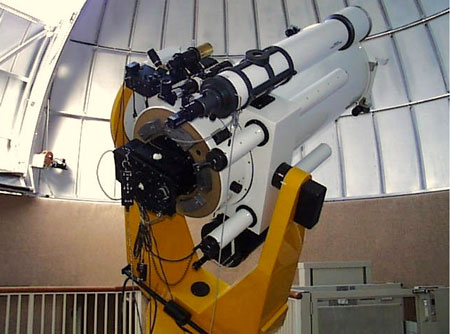| Dec 11, 2012 |
Student team provides real-time video of asteroid Toutatis
|
|
(Nanowerk News) An asteroid that some day might threaten Earth is passing relatively close by on the night of December 11–12, and its gliding path among the stars will be tracked by a team of high-school students at the Clay Center Observatory in Brookline, Massachusetts.
|
|
Weather permitting, real-time high-definition video from the observatory’s 25-inch-diameter telescope will be available from 5 p.m. until 11 p.m. (EST) on December 11th and can be freely accessed via the observatory’s Ustream channel.
|
 |
| The Clay Center Observatory's main instrument is this reflector with a 25-inch (0.64-m) aperture.
|
|
The asteroid, known as 4179 Toutatis, is a lumpy, elongated object roughly 3 miles (5 km) long. It circles the Sun in a looping oval that ranges from just inside Earth’s orbit to well beyond Mars. This orbit is unstable, and some day Toutatis might collide with Earth or be flung by Jupiter into the Sun or completely out of the system.
|
|
Toutatis returns to Earth’s vicinity every 4 years, and this time around it will come its closest at a distance of 4.3 million miles (6.9 million km) at 1:40 a.m. EST on December 12th (10:40 p.m. PST on the 11th). For a few days, the asteroid will appear bright enough to be visible in moderate to large backyard telescopes as it glides through the constellations of Cetus and Pisces, which are currently high in the evening sky.
|
|
The Clay Center Observatory is located on the campus of the Dexter and Southfield Schools in Brookline, Massachusetts. A team of students led by Nicholas Weber, Nicholas Veo, and Samuel Lapides will coordinate the observations. They will record changes in the asteroid’s brightness over time to determine its rotation rate and to provide a visual counterpart to radar observations being conducted in California and Puerto Rico.
|

